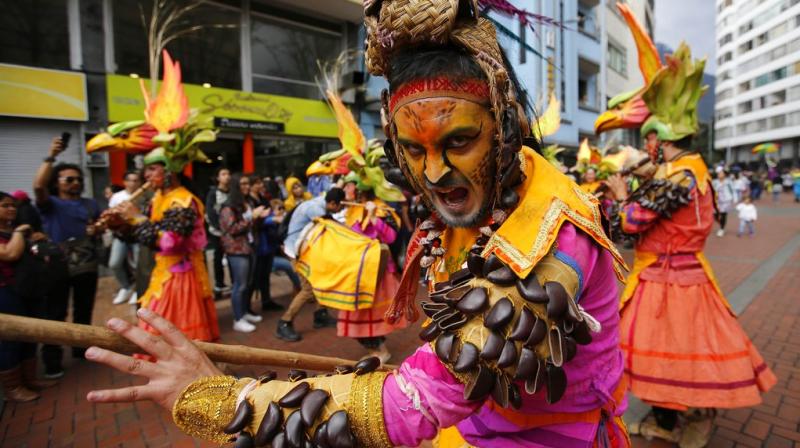Al-Ula: Saudi Arabia's largest archaeological city
AFP
Published : Apr 11, 2018, 11:18 am IST
Updated : Jul 6, 2019, 3:32 pm IST
Al-Ula, an area rich in archaeological remnants, is seen as a jewel in the crown of future Saudi attractions as the kingdom prepares to issue tourist visas for the first time. (Photo: AFP)

ADVERTISEMENT
A picture taken on April 1, 2018 shows a man standing outside of the Qasr al-Farid tomb (The Lonely Castle) carved into rose-coloured sandstone in Madain Saleh, a UNESCO World Heritage site, near Saudi Arabia's northwestern town of al-Ula. Al-Ula, an area rich in archaeological remnants, is seen as a jewel in the crown of future Saudi attractions as the austere kingdom prepares to issue tourist visas for the first time -- opening up one of the last frontiers of global tourism. (Photo: AFP)

ADVERTISEMENT
A picture taken on April 1, 2018 shows an aerial view of carved rose-coloured sandstone mountains, known as "The Dancers", in al-Ula in northwestern Saudi Arabia. Saudi Crown Prince Mohammed bin Salman is set to sign a landmark agreement with Paris on April 10, 2018 for the touristic and cultural development of the northwestern site, once a crossroads of ancient civilisations. (Photo: AFP)

ADVERTISEMENT
A picture taken on April 1, 2018 shows an aerial view of carved rose-coloured sandstone mountains in the desert of al-Ula in northwestern Saudi Arabia. The chiseled rock art forms could help unravel the mysteries of millennia-old civilisations on the Arabian Peninsula. (Photo: AFP)

ADVERTISEMENT
A picture taken on March 31, 2018 shows a Saudi man walking near ancient tombs at the Khuraiba archaeological site near Saudi Arabia's northwestern town of al-Ula. The area, roughly the size of Belgium, served as an important way station and bedouin watering hole on the trade route linking the Arabian Peninsula, North Africa and India. (Photo: AFP)

ADVERTISEMENT
A picture taken on April 1, 2018 shows an aerial view of the Qasr al-Farid tomb (The Lonely Castle) carved into rose-coloured sandstone in Madain Saleh, a UNESCO World Heritage site, near Saudi Arabia's northwestern town of al-Ula.The tombs, some containing pre-Islamic inscriptions and drawings such as hunting scenes, are a legacy of the Nabataean artistic tradition. (Photo: AFP)

ADVERTISEMENT
A picture taken on March 31, 2018 shows foreigners walking nextto a date farm amidst sandstones in the Khuraiba archaeological site near Saudi Arabia's northwestern town of al-Ula. The walled city of Al-Ula, with tightly packed mud-brick and stone houses that were inhabited until modern times, sits decaying under the scorching sun. (Photo: AFP)

ADVERTISEMENT
A picture taken on March 31, 2018 shows a Saudi man standing at the entrance of a tomb at Madain Saleh, a UNESCO World Heritage site, near Saudi Arabia's northwestern town of al-Ula.Al-Ula is expected to fully open up to global tourists within three to five years, launching the site as what Saudi officials describe as “a gift to the world”. (Photo: AFP)

ADVERTISEMENT

















